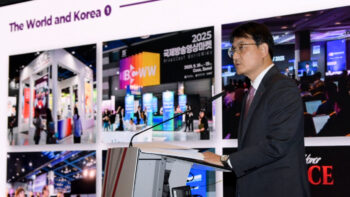A new mantra is increasingly ringing out in board meetings across Europe, especially from the mouths of chief financial officers (CFOs): “We stop buying hardware”. This phrase, although it sounds like a technological decision, is in fact a purely financial declaration. We are witnessing a phenomenon that can be called the CFO Syndrome – a conscious and aggressive redirection of cash flows from capital expenditure (CAPEX) to operating expenses (OPEX).
Instead of owning IT assets, companies prefer to pay for them in the form of a monthly subscription. The IT as a Service (ITaaS) model has become a tool of first resort for CFOs in the battle for short-term financial optimisation.
The impetus is understandable. In an unstable macroeconomic environment, with fears of a recession (at one point expected by as many as 79% of European IT directors ) and the rising cost of capital, liquidity has become more important than owning our own rapidly ageing resources.
However, this pursuit of budget flexibility raises a fundamental question: is it a brilliant financial manoeuvre or a strategic mistake that leads European companies straight into the vendor lock-in trap? An analysis of market data, financial motivations and – crucially – upcoming EU regulations, paints a much more complex picture than one might think.
The new reality: So who is buying all this equipment?
At first glance, the market data confirm the CFO’s strategy. Gartner’s forecasts for Europe for 2025 show dynamic growth in OPEX-based segments: software spending is expected to increase by 13.2% and IT services by 9.2%. At the same time, IDC data pointed to historic declines in the PC market and stagnation in other hardware segments.
However, a paradox emerges. How can it be that no one is buying hardware when the same Gartner predicts an explosive global growth in spending on data centre systems, driven by AI?
The answer is simple and is at the heart of the change: European companies have not stopped buying computing power. They have outsourced the buying of it (in the form of CAPEX) to a very narrow group of giants – hyperscalers (like AWS, Azure, Google) and the largest service companies. They account for more than 70% of AI server spending. CAPEX has not disappeared. It has been consolidated by cloud providers and then resold to companies as a service under the OPEX model.
IDC analysts aptly called this phenomenon the ‘First Recession in the Service Era’. In the old model (CAPEX), the CFO’s response to the crisis was simple: ‘We stop buying new servers’. In the new model, where IDC predicts that 40% or more of IT spending is already as-a-service , this move is impossible. Cloud subscriptions that support a company’s day-to-day operations cannot be stopped. Instead, CFOs are forced to make painful and permanent OPEX resets and hire FinOps teams whose sole purpose is to control cloud bills.
Anatomy of the CFO syndrome: cash, valuation and taxes
To understand the scale of this migration, it is important to analyse the key motivators of the CFO.
The first and most obvious reason is cash. The CAPEX model requires significant upfront cash outlay. In times of uncertainty, freezing millions in assets that are rapidly losing value is a nightmare for CFOs. The OPEX (ITaaS) model offers flexibility. Instead of one large expense, the company receives a predictable (at least in theory) monthly cost that can be funded from ongoing operations.
A second, more subtle driver is the growing influence of private equity (PE) funds in the European market. These funds operate with a short, usually 3-5 year investment horizon, geared towards a quick exit (exit). In this model, CAPEX is the deal-breaker – it is slow and requires long planning. The OPEX model (cloud, SaaS) allows for instant digital transformation and aggressive scaling of the business. Interestingly, the goal here is not to increase EBITDA at all, but to create a narrative when selling the company. The OPEX-based model supports the story of a highly scalable, flexible and capital-light business, allowing the fund to achieve a higher valuation.
Finally, there is an obvious tax advantage. OPEX expenditure is an expense immediately deductible from the tax base in full in any given year. CAPEX expenditure is amortised, so the tax relief is spread over many years. In a high inflation environment, the immediate relief has a much higher present value.
Hidden price: the Vendor Lock-in trap
However, short-term financial optimisation comes at a price. An OPEX-only strategy leads companies straight into the strategic trap of vendor lock-in – dependence on a single supplier ecosystem.
The myth of cost predictability is rapidly collapsing. The CFO who was counting on a fixed monthly bill is confronted with the reality of invoice shock (bill shock). Complex price lists , uncontrolled consumption and over-allocation of resources (overprovisioning) make costs difficult to forecast.
Once a company is trapped in the ecosystem, it loses all negotiating power. The supplier, knowing that the customer cannot leave without operational paralysis, is free to raise prices, reduce service quality or force changes contrary to the customer’s interests.
The mechanism that physically closes this trap is egress fees. Cloud providers operate like a casino: data transfer to the cloud (ingress) is almost always free. By contrast, the transfer of data out of the cloud (egress) – whether to another provider or back to their own server room – is subject to exorbitant and often unpredictable fees. These are the financial barriers preventing change.
As a result, the long-term Total Cost of Ownership (TCO) of the OPEX model becomes drastically unfavourable for stable loads. The cloud is like a hotel: comfortable for a short stay, but not lived in permanently. TCO analyses for GenAI workloads show that on-premise infrastructure (CAPEX) becomes cheaper than the cloud (OPEX) after just 12-22 months of continuous use. High-profile case studies, such as SingleStore’s, showed that spending on the public cloud could be nearly 20 times the cost of owning their own infrastructure.
A new deal: repatriation and EU regulatory arbitration
The market has started to correct this mistake itself. We are seeing a strong trend of cloud repatriation – companies are moving resources from the public cloud back to their own or hybrid data centres. This is not a marginal phenomenon. Research indicates that up to 70% of companies are actively considering this , and high-profile examples such as Dropbox and insurance giant GEICO have shown that tens of millions of dollars can be saved. What’s more, the hyperscalers themselves have admitted to the UK Competition Authority (CMA) that repatriation and on-premise are real competition for them. Mature companies now know that the future is hybrid – OPEX for dynamic projects, CAPEX for a stable core of operations.
However, this is when the European Union comes into play, completely changing the rules for European CFOs.
The EU Data Act, which became fully applicable on 12 September 2025 , was designed to outlaw the problem of vendor lock-in.
The most important provision concerns fees. The Data Act introduces a phasing out of switching fees. But from 12 January 2027, the Data Act completely removes switching fees, including egress fees.
The main financial mechanism causing vendor lock-in is banned by law in Europe.
End of syndrome, time for a hybrid strategy
The CFO syndrome – the blind pursuit of OPEX at the expense of CAPEX – was a logical short-term financial optimisation. However, it led straight into a strategic trap, the costs of which materialised after a few years.
The market itself has started to move towards balance through repatriation and hybrid strategies. Now the European regulator has fundamentally changed the TCO calculation. Lock-in risk has fallen dramatically, although it is to be expected that cloud providers will pass on lost revenue to other services by raising their base prices.
The CFO in Europe who approves IT strategy today needs to look beyond the simple conversion of CAPEX to OPEX. He has to build a hybrid strategy, based not only on the nature of the workload but also on the new regulatory arbitrage. The ability to migrate ceases to be a technical challenge and becomes a legally guaranteed standard.












